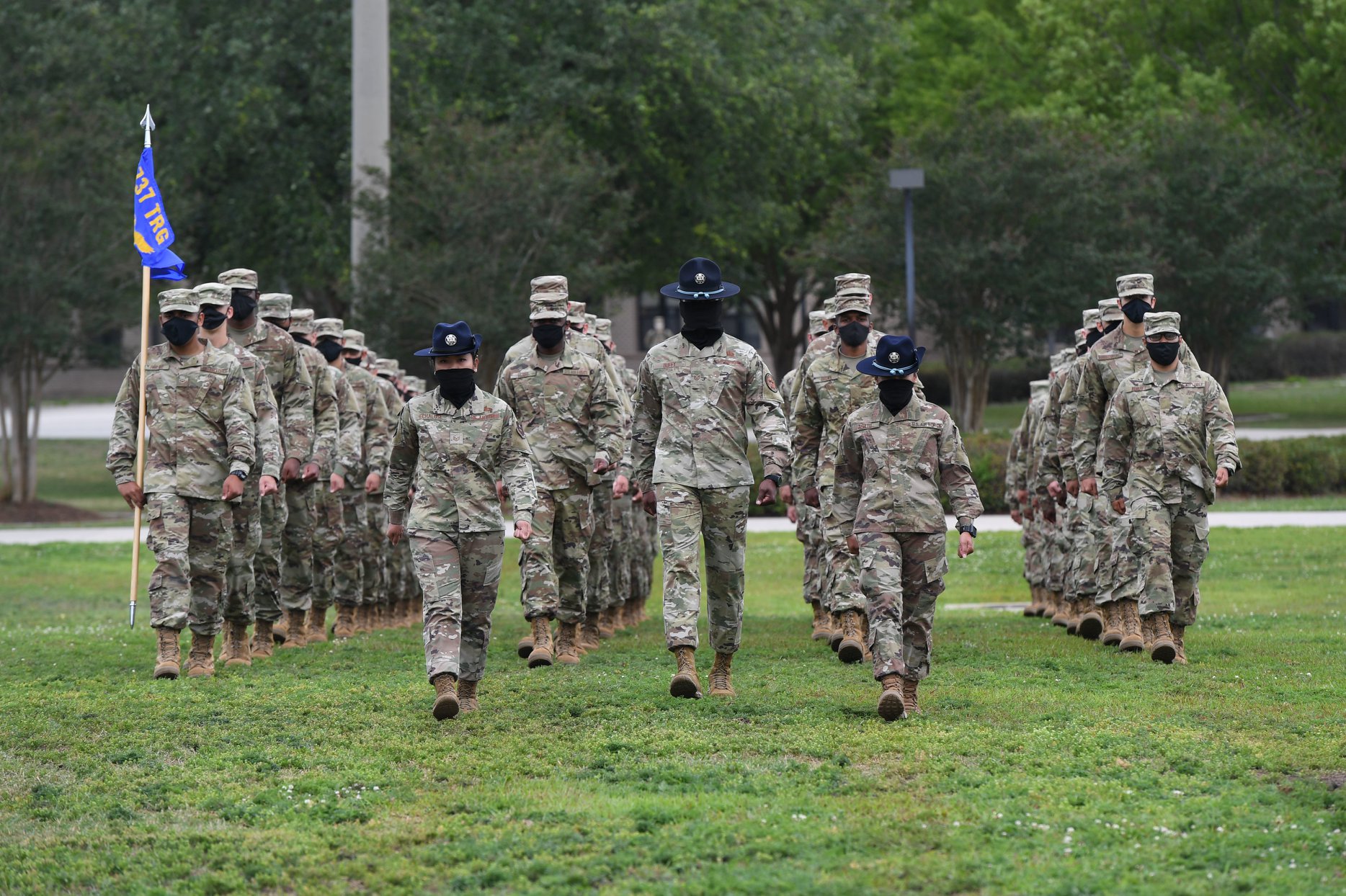Pandemic causing long-term recruiting effects for Air Force
The service is on target for the first quarter of 2022, but the second half of the year will be an uphill battle.
Earlier this month, the leader of the Air Force Recruiting Service was seeing warning lights flashing for the Air and Space Forces’ 2022 goals.
In an email to the command, he said that now two years into the pandemic, the service is seeing fewer leads on possible new recruits.
“If we were a company, we would still be in the black, we would still be making a profit, but our profit margins and our available capital, those numbers are trending down right now,” Maj. Gen. Edward Thomas, Jr., commander of the Air Force Recruiting Service, told Federal News Network. “The aggregate effect of these two years of COVID is driving downward trends in our pool of qualified applicants.”
So far, in the first fiscal quarter of 2022, the Air Force is meeting expectations. The service wanted to recruit 6,030 members to the active duty force; it got 6,031. That tracks slightly below the numbers from previous years. In all of 2021, the Air Force recruited 27,709 people, 37 more than its goal. In 2020, the service brought in more than 150 more active duty members than it planned.
The Air Force has a smaller benchmark to reach in 2022. The service is hoping to bring in 26,151 active duty recruits by the end of the year. The previous two years’ goals were more than 27,500.
It’s not just the people who have signed contracts that the Air Force needs to keep its eye on though. The service has what it calls “qualified and waiting” recruits, people who are not fully signed on, but are waiting in the pipeline. That is where the Air Force is seeing some concern.
“Those who are on contract now, we have those secured all the way through the second quarter of this fiscal year. That takes us all the way through March,” said Col. Jason Scott, chief of the operations division at Air Force Recruiting Service.
Scott said the qualified and waiting list is secure until about halfway through May and then things get a little hairy.
“When we look at our qualified and waiting, and we look at the data and the numbers, typically, we would like it to be somewhere around 5,000,” Scott said. “We’re a little less than half of that; it’s just over 2,200 right now.”
There are some issues in the reserve and Air National Guard as well. The Air Force did not hit its goals for the first quarter of 2022 for either of those components. The service met nearly 94% of its reserve goal and about 78.5% of its Air Guard goal.
Thomas said there are multiple issues from the pandemic that are hindering recruiting.
“There’s several contributing factors to this large reduction in public interactions. That includes things like school visits, getting our recruiters into high schools, the national labor shortage that we have right now, atrophy in recruiting skills in many of our newest recruiters — for many of them all they have experienced is a COVID environment,” Thomas said. “There’s also a longer term trend. There’s a decline in the public’s connection to the military, a decline in their understanding of who we are and what military service is all about. All of those factors, combined with two years of COVID have really brought us to a challenging point in recruiting today.”
The Air Force is finding new ways to do things that were only possible in person. It’s adopted e-signatures for contracts and found ways to connect online through gaming and social media.
“We’ve got one of the top five marketing companies in the United States that has partnered with the Air Force and we have a mind numbing level of analysis, to be able to determine where 17- to 24-year-olds are, and what spaces they are in, what their viewing habits are and what games they are playing,” Thomas said.
The military as a whole is struggling with recruiting.
The Army, for the first time, started offering a $50,000 enlistment bonus to new recruits in certain positions.
“We are still living the implications of 2020 and the onset of COVID, when the school systems basically shut down,” said Maj. Gen. Kevin Vereen, head of Army Recruiting Command, told the Associated Press. “We lost a full class of young men and women that we didn’t have contact with, face-to-face.”
A recent study by the RAND Corporation found that the services relied heavily on retention to meet their end strength goals at the beginning of the pandemic.
“Retention rose, especially for retirement-eligible personnel, for the Army, Navy, and Air Force,” the authors of the study wrote.
Copyright © 2024 Federal News Network. All rights reserved. This website is not intended for users located within the European Economic Area.
Scott Maucione is a defense reporter for Federal News Network and reports on human capital, workforce and the Defense Department at-large.
Follow @smaucioneWFED





